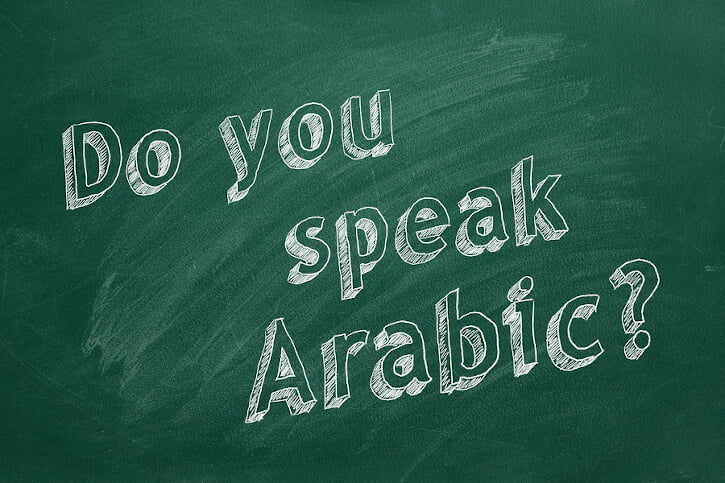The Arabic language and its dialects
The Arabic language is the 5th most widely spoken language worldwide, spoken by almost 700 million people. This fascinating and ancient Semitic language arouses many questions regarding its varieties and dialects. We are here to solve some, read on!
Taking a general overview of the Arabic language, we shall distinguish between:
- Classical Arabic: Also known as Quranic Arabic, Classical Arabic is the written language of the Quran, the sacred and spiritual text of Islam. Being such an ancient language, Classical Arabic is no longer a spoken language and it is used mainly for religious purposes. If you want to study or read the Quran in its original language, you will need to study Classical Arabic!
- Modern Standard Arabic: Also known as MSA, Modern Standard Arabic derives from Classical Arabic and it is the foundation language upon which all the several Arabic dialects are based. MSA is used in formal meetings, politics, the news, newspapers and books. If you want to learn Arabic, learning MSA could be the perfect starting point before you dive into a specific dialect!
- Arabic dialects: Arabic dialects are used in everyday life. They are used for every daily task and serve to communicate with almost anyone. Arabic dialects don’t have a standardized written form, thus they can vary even within the same country. If you are living in an Arab country and want to easily communicate with your neighbors and new friends, try with the Arabic dialect of the country you are living in!

Some of the major Arabic dialects are:
- Egyptian Arabic: Egyptian Arabic is the most studied and widely spoken Arabic dialect, with over 60 million speakers. Egyptian Arabic had influences of European languages such as Italian, French, Greek, English and Turkish. It is also a dialect well understood through most of the Arab-speaking countries.
- Levantine Arabic: Spoken in parts of Jordan, Syria, Lebanon, Palestine and Israel, Levantine Arabic is the native language of over 32 million speakers. Whether the media and official documents are written in MSA, Levantine Arabic is spoken in daily life situations. This dialect is usually broken up into two major varieties: South Levantine and North Levantine.
- Mesopotamian Arabic: The continuum of Arabic dialects spoken in Iraq, Syria, Iran and Turkey. There are two major varieties within this dialect: Gelet Mesopotamian Arabic and Qeltu Mesopotamian Arabic.
- Sudanese Arabic: The Arabic spoken in Sudan and regions of Eritrea. With over 31 million native speakers, Sudanese Arabic is similar to Egyptian Arabic, but with some particularities. For example, the letter ج is pronounced “g” in Sudanese. Besides pronunciation, whilst some words as the interrogative pronoun “what” are pronounced “eh” in Egyptian Arabic, in Sudanese Arabic is said “shinu”.
- Maghrebi Arabic: Spoken in the Maghreb region, concretely in Morocco, Algeria, Tunisia, Libya, Western Sahara and Mauritania. Maghrebi Arabic integrates French, Spanish and English words.
- Peninsular Arabic: Spoken in Yemen, Oman, Saudi Arabia, Kuwait, United Arab Emirates, Qatar, Bahrain, Southern Iraq and by native Jordanians.
Fascinating, isn’t it? The Arab world is complex and wide, and its long history has given rise to many linguistic forms that have evolved over time and continue to do so thanks to the huge family of Arabic speakers.
Do you want to join them?
Start by taking an Arabic course and explore the Arab world


